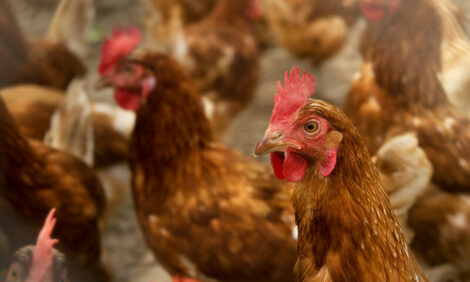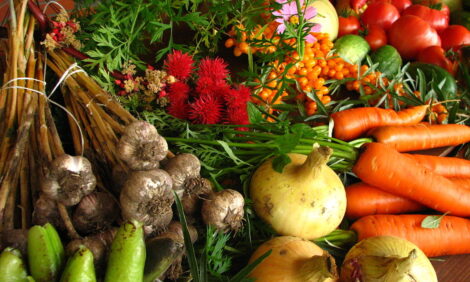



CME: Retail Meat Prices Forced Higher in August
US - Last year’s record-high production costs and drought reduced supplies continue to force retail meat prices higher with beef, pork and chicken prices setting new records again in August, write Steve Meyer and Len Steiner.This marks the fourth time this year that the average retail price of Choice beef has set a new record with the newest being $5.394/lb.
August is the fifth month this year that the average price for All Fresh beef (which included grades other than Choice) has been record high.
The new record is $4.968/lb. While August is just the second month in 2013 to see record-high pork prices, the August jump was HUGE at 12.7 cents/lb. or 3.5%. The increase brings the average pork price to $3.757/lb., 6.6% higher than one year ago. And the average price of Composite Broilers (which includes broiler parts) was $2.002/lb. in August, marking its first ever value above $2/lb. Turkey prices did not set a record last month but rebounded very well from July’s “flash debacle” to $1.663/lb., its highest level since April 2012.
USDA’s Farm Service Agency released its latest compilation of crop acreages yesterday and it appears the trade is viewing it as inconclusive at this point. The data address, to some degree, the questions about this year’s level of prevented plantings for both corn and soybeans and indeed indicate that the figures are high.
The September data indicate 3.573 million acres of corn did not get planted this spring. That compares to August’s 3.411 million and only 262,342 acres in last September’s data. Just over 1.687 million acres of soybeans did not get planted this year according to the September data. That compares to 1.619 million acres in the August data and only 161,445 acres last year.
Obviously, last year’s very open planting season left few acres unplanted. That differs dramatically from this year when a late spring and heavy rains kept farmers out of their fields in many areas.
The key questions for these data are “How do they relate to historical harvested acres and what does this imply for final harvested acres this year?” As can be seen in the tables at right, it currently appears that August WASDE estimates of harvested acres are high relative to FAS planted acres for both corn and soybeans.
WASDE harvested acres have represented 95.2% and 93.1% of FAS planted acres the past two years (and the only two years for which the monthly release data are available). At present, WASDE harvested acres represent 97.5% of the FAS planted number. Should that figure drop to 95.2%, the figure from 2011, a year with a prevented plantings level comparable to this year, it would mean that harvested acres would fall by 2.056 million acres or 2.3% of the August WASDE number. At USDA’s current yield estimate of 155.3 bu/acre, that acreage reduction would reduce the crop by 319 million bushels.
The deviation of WASDE harvested acres from FAS planted acres for soybeans is similar to that of corn. Again using 2011 as the comparison year due to its relatively high level of prevented plantings, a reduction of harvested acres to 100.3% of the FAS September plantings figure would put this year’s harvested soybean acres at 74.880 million, 1.520 lower than the August WASDE figure. At USDA’s August yield estimate or 41.2 bushels per acre, that acreage reduction
would take 62.6 million bushels off the 2013 crop.












